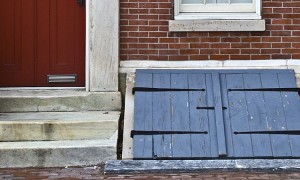The historic home you decided to buy in Philadelphia looked fantastic on the outside. But, now that you own it and live in it, you’re starting to see that it’s not without its issues. The electrical can’t handle the demands of 21st century life or the windows are pretty drafty. House restoration and renovation of historic properties can be a bit more complicated than renovating or restoring a newer property. There are more rules to follow and you are more likely to find a few surprises during a historic house restoration project.
Interior Changes
For the most part, when you are renovating the interior of a historic home in Philadelphia, you have free rein over the changes you make. While updating the interior of your home, to make the electrical wiring safer or to improve the plumbing, makes sense if you want to live in the 21st century, completely revamping the interior so that it looks super contemporary might not.
You most likely purchased a historic home to enjoy the small details, such as pretty stained glass windows or intricate crown molding, that you just don’t find in modern houses. Use the historical details inside the home as your guide when planning your renovation. Don’t get rid of them. Instead, figure out how to update the house while working around and with the interior details that make it special.
Exterior Changes
Things get a bit more complicated when you want to make changes to the exterior of a historic home. If your home is listed on the historical register, you need to get approval from the Historical Commission before going forward with any changes. Projects that require review and approval from the Commission include any changes to the windows and exterior doors, changes to the roof and facade, changes to the exterior lighting fixtures, and much more. If you want to alter or renovate any part of the exterior of the house, you need to clear it with the Commission first, except for general maintenance projects or landscaping and gardening.
Your Budget
If the walls of your old house could talk, they’d have a lot to say. The walls might tell you, “Hey, there’s lead paint a few coats down,” or “There’s asbestos here!” Since historic homes tend to be full of secrets and surprises, its best to allow enough room in your budget for remediating any problems that arise during your restoration. A good rule of thumb is to add about 10 percent of your initial budget to the overall cost, so that you have enough of a cushion to afford to correct any issues that pop up along the way. It can also be helpful to add a cushion of time to the project, as surprise problems can make the renovation take longer than first thought.
Work with Professionals
Before you make any changes to your home, it’s a good idea to call in a professional, licensed contractor — preferably one who has worked with historic properties before. The Chestnut Hill Historical Society has a list of general contractors who typically do historical projects. It’s up to you to get references for any contractor you work with and to vet the company before you hire it. Get quotes from at least three contractors before you choose one so that you can see what options are out there.
When you’re renovating a historic property, you want to preserve the past while making the home livable for today. Dot your I’s and cross your T’s to minimize or avoid any potential problems along the way.
[cf]skyword_tracking_tag[/cf]






